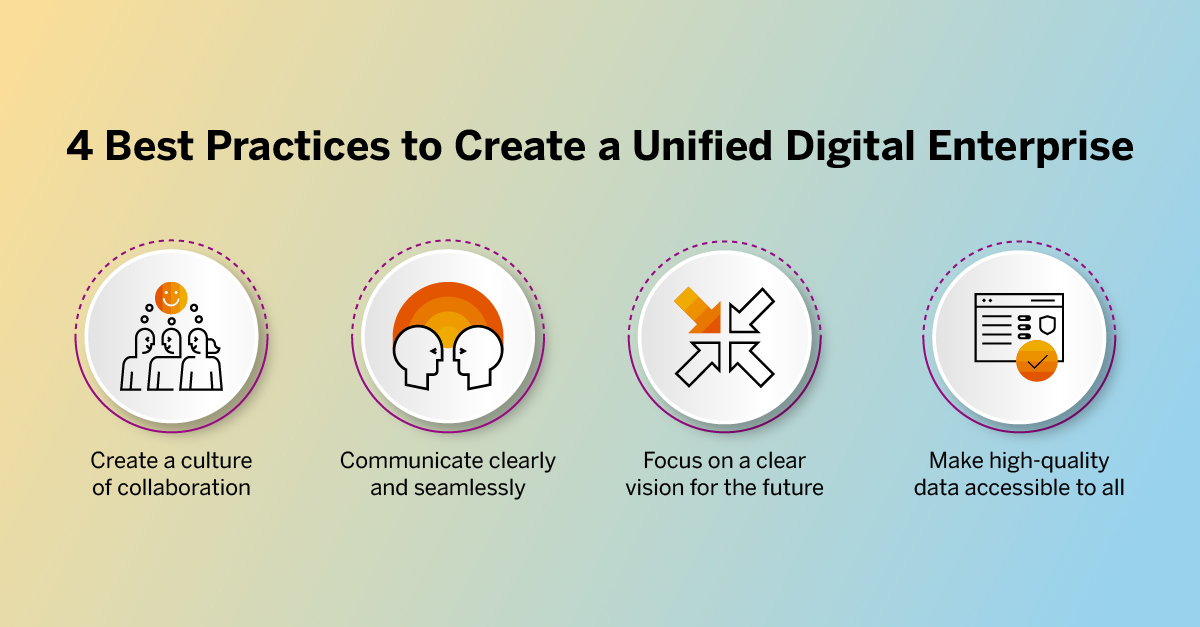The world is on the web! We have come a long way from the initial IT revolution in the 90s to a situation where it now has a complete grasp on our lives. Among other aspects of our lives that IT has influenced, customer experience and after-sales service are two that have changed significantly.
In the global marketplace, there is a rapid exchange of services and data across countries and continents. One model that this exchange of information has made possible is outsourcing. Many companies can now relegate their work to a third-party service provider or to branches far away from their headquarters. While this helps cut costs and streamline the process, it can also lead to compartmentalization of the work. This often leads to communication gaps and a not-so-perfect user experience.
Or let’s take the example of a business that has not outsourced any operation. Even then, it is possible that different departments may work as separate units, without visibility into each other’s work and scope. Complex workflows, different platforms and siloed processes are common characteristics of such an architecture.
But the customer does not need to know this. Today, instead of simply viewing a company’s website, customers interact with it through many channels, including social media, mobile apps, and other online and offline platforms. They expect a seamless, customized journey across all their touchpoints. If any business fails to deliver this, the customer will move to the competitor without any qualms.
So, what can businesses do? They must now implement adequate processes and systems to give a consistent brand experience across all relevant media. One way to do this is by implementing digital asset management or DAM tool. This tool plays an integral role in creating a unified digital enterprise.
What is a Unified Digital Enterprise?
It is an organization that uses digital solutions or tech-based tools end-to-end, from day-to-day operations to interacting with clients. To create distinctive and inventive customer experiences, they connect their sales, financing, service delivery, marketing, and support platforms. Such an organization can also have a unified digital strategy for customer engagement. This understands that all business strategies and technologies interact with customers in some way. To win and maintain consumers in today’s digital world requires committing to provide ease-of-doing-business based on customer expectations for every engagement through any channel.
For example, imagine reaching out to the customer care of any company for any assistance. In a company with a traditional work model, we have to reiterate our problem multiple times to different departments, such as customer service, engineering, service and even customer feedback department. Even if the issue does get resolved, as a customer, you feel irritated at having to talk to different employees about the same problem.
Today, every end-user expects that their problem is summarized and shared with everyone in the service chain. This is beneficial to both the customer and the service team. Sharing information about the issue at hand and other relevant details with all the concerned teams helps save time and resources- financial and human.
How Can a Unified Digital Enterprise Provide Competitive Advantage?
Top-performing companies are digital because of the way they operate, from how they use data to their organizational structure. With products and experiences that are flexible across physical and digital interactions, a customer’s experience with their brand is totally integrated and constant because everything is connected behind the scenes.
Unified digital enterprises help build such connected, high-performance teams that deliver seamless results. These AI-powered immersive ecosystems help teams to generate massive business outcomes, spearheaded by the C-suite management. It gives the top management complete control and a clear idea about the workings of the various departments. This allows for continuity in work and a holistic customer journey.
Some of the internal benefits of building a unified digital enterprise are:
- Improves the existing processes by implementing strategic decisions in key places
- Increases employee and team productivity
- Strengthens data security
- Allows better communication with remote workers
- Enables cost reduction and improved organizational agility
What is needed to create a unified digital enterprise?
According to industry insiders, to create a unified digital enterprise, companies need to:
- Understand their target audience
- Implement their services in a strategic manner
- Execute a cross-channel implementation of strategies
- Provide support across all platforms
The fact that corporate digital environments are growing increasingly diversified may necessitate the introduction of new specialized solutions to manage them. But a fragmented toolset will offer a fragmented image of the firm. Organizations will need to explore solutions that can ingest data from many sources, evaluate and correlate it, and give more useful insights while using less budget.
One way to do so is by implementing the digital twin technology. It is a super-integrator that gathers enormous amounts of data from multiple sources. It establishes a digital highway that connects all of the data lanes, bringing them together in a single point of truth via a dashboard or an immersive environment. To drive real-time innovation, it uses comprehensive life-cycle data. It also adds transparency and real-time visibility to systems, allowing businesses to make more informed decisions. Ultimately, this creates a unified digital enterprise.
Best practices to implement a unified digital enterprise
Excellence in two important areas, collaboration and analytics, will fuel the next-generation, relationship-based enterprise, resulting in long-term competitive advantage. Companies who can efficiently translate data into insight in real time and use that insight to make decisions across departments will succeed. Accordingly, here are some best practices to be kept in mind to create a unified digital enterprise.
- Create a culture of collaboration
Multidisciplinary teams that bring diverse perspectives to problem-solving and can think about the businesses as a whole are required. They can help design and continuously optimize the types of unified experiences that accelerate revenue and increase customer loyalty. These are groups of people brought together to address a particular type of client problem or experience, rather than a specific channel. Organizations that enable these teams to collaborate, iterate, fail quickly, and stay focused on outcomes rather than output are set up for success.
- Communicate clearly
Efficiency is obtained only when there is seamless communication. Better collaboration through open communication and access to data via a digital asset management system helps the team work efficiently, positively impacting the customer experience.
- Focus on a clear vision
Organizations need to start by establishing a clear vision for the future. They need to define what sets them apart, where they want to invest, and how they want customers to interact with their products and services. This reduces confusion and empowers all employees to make decisions that will have the greatest impact across the organization.
- Make high-quality data accessible to all
Multidisciplinary teams require access to data that is standardised, available in real time, and accessible to all sections of the business. This enables them to make the best decisions, based on a clear picture of the future. A truly unified digital enterprise will be based on robust data and universal accessibility.

How can a small business become a unified digital enterprise?
It is easy to imagine that what we have discussed is reserved for big enterprises with thousands of dollars at their disposal. But small and middle-scale enterprises can provide an equally enjoyable and frictionless experience to their clients. For one, it is easier for a smaller organization to offer a more personalized experience to its clientele. Since there is a shorter chain between the top management and the end-user, any change can be implemented faster and more smoothly.
Secondly, a Digital Asset Management system isn’t costly to implement, and it is an investment for the future. It enables a smaller organization to react swiftly to changes within the industry/marketplace and seize time-sensitive chances. There is no need for expensive third-party integrations and the top management also has greater control over all aspects of the business.
To sum up, we will go back to the popular saying ‘there is greater unity in diversity’ – every department is diverse and different, but they all are a part of a unified whole. By combining technology and business processes, an organization can successfully navigate the digital age and become a truly unified, intelligent enterprise.



